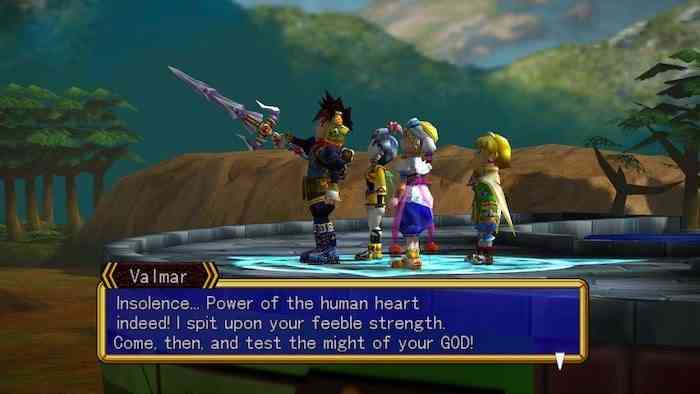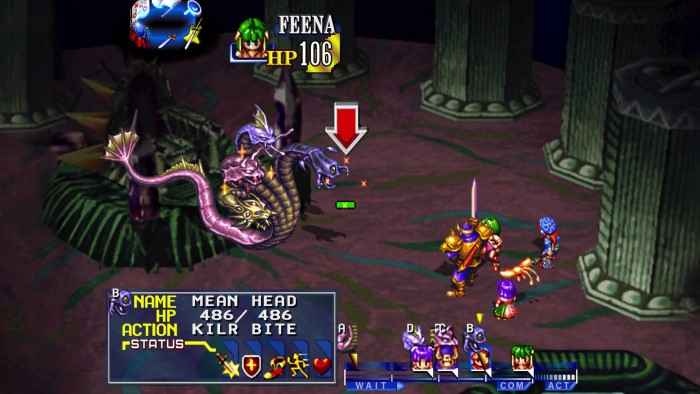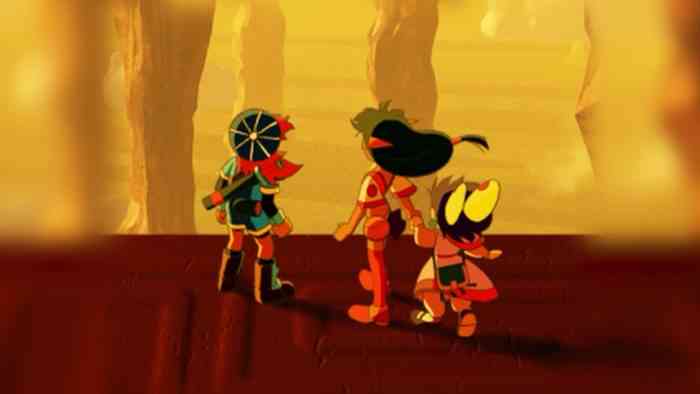Grandia HD Collection (PS4) Review
Grandia HD Collection is a set of the first two games in the Grandia JRPG series, originally released as a collection for the Switch in 2019. PC owners got access to Grandia HD Collection later that year, but PlayStation 4 and Xbox One owners are finally getting their hands on it in 2024! COGconnected reviewed the Grandia HD Collection for the Switch when it was first released. While that review does a great job of summarizing the games, I have a little more love for them than that reviewer did. I’d also like to elaborate a bit more on what makes the battle system special. If you have that Switch collection, then this new release is exactly what you already have. There’s no new content. If you’re new to the Grandia series, and curious about these classic JRPGs, then read on, and I’ll tell you all about them.
Grandia was originally released for the Sega Saturn in Japan in 1997. It was ported to the original PlayStation a couple years later, and that’s the version we got in North America. Grandia II was originally released for the Sega Dreamcast in 2000, and this time, North America got it only a few months after Japan. There was a port for the PS2 a couple years later. The Grandia series had one more mainline game, Grandia III for the PS2, and a few spin-offs. But the Grandia HD Collection only has the first two games. I would have really loved if Grandia III was included, because it was also very good, even though most would consider it a step down from Grandia and Grandia II.
Game Arts Pedigree
The series was developed by Game Arts, who are mainly famous for the Lunar series. Grandia is an interesting juxtaposition to Lunar, because both series excel at different important aspects of JRPGs. Lunar is most beloved for its plot, despite its simple battle system. Grandia has a very simple plot, but has a wonderfully complex and immersive turn-based combat system.

Without giving away many plot details, the stories found in the Grandia HD Collection are much more light-hearted than the typical JRPG plot. For example, in Grandia, there is a background story about an evil general excavating ancient ruins for unknown reasons. But the real emphasis of the story is on the characters, and their hilarious interactions. The protagonist is Justin, who dreams of a life of adventure. So he leaves his hometown with his “sister” Sue, to climb a giant wall at “The End of the World”. The emphasis is put on the character interactions, their fun dialogue, and the joy of their adventure. Grandia is absent of a lot of the doom and gloom found in its best JRPG contemporaries. I love the classic JRPG “punch out God” plotline, but Grandia’s lighthearted nature is a breath of fresh air to the genre.
Next-Level Combat
Both games in the Grandia HD Collection share a similar battle system. It’s turn-based, similar to Square’s ATB system. A gauge in the corner shows all the combatants, who approach their turn at varying speeds. Attacks can halt combatant’s turns, so victory can really depend on the player’s ability to postpone their opponent’s turns as much as possible. There’s also a bit of onscreen movement, and certain attacks affect specific areas. Enemies can be seen in dungeons (a rarity for the time), and players can get preemptive strikes by initiating combat.

Every character’s skills and magic spells can be levelled up. Each weapon has skills attached to it. Stronger spells take more time to cast. A lot of the joy of playing the Grandia HD Collection for me was experimenting with skills, levelling them up, and earning new skills in turn. The only downside to the combat system is that there’s never really a time the player can just blast through battles. Every battle takes time, and some of the spell animations can get repetitive. But the player is always experimenting, and never bored. Combat is a real treat, and the universally accepted aspect of the Grandia games that shines brightest.
Damn Dirty Camera Zoom
The world and environments of both games in the Grandia HD Collection are vibrant, and a real treat to explore. But there’s one mechanic about exploring I really didn’t like, and that’s the zoomed-in camera. A lot of the dungeons can get pretty maze-like. And the camera is so close to the characters that it’s very easy to get lost. The developers were obviously aware of this, and included checkpoints where the player could zoom the camera out, to get a better look at things. Imagine playing a Metroidvania where you could only look at the area map at save points, and you get the idea. A minimap would have been a much more elegant solution. It’s something that might be a large hurdle for a lot of modern players, and the sole blemish on these excellent games.

Grandia’s graphics are 2D sprites on 3D backgrounds, while Grandia II’s graphics are fully 3D. Both games look really good, but the sprite work in the original Grandia is exceptional. The character designs are full of life, and really convey emotion well during cutscenes. I’m a sucker for great pixel graphics, and the PS1/ Sega Saturn time of 2D sprites might be the most aesthetically pleasing graphics era for me. There has been some criticism towards the remastering of the graphics in the Grandia HD Collection. The sprites in the original game were remastered with a softening. Some would have preferred a really crisp pixel presentation. I actually really like the soft look, but a graphics option could have been a choice that would have pleased everyone.
Solid Remaster
The remaster quality of the Grandia HD Collection is very good, but is also very bare bones. The only options are to invert the camera controls, and choose between English and Japanese voices. The voiceacting is a real treat though, and is present for a large portion of the games. The pacing of these scenes is a little awkward and slow. Some might complain about the voiceacting as bad, but it has a retro charm, similar to the voiceacting in the early Resident Evil games. I really enjoyed it. The music is a wonderful blend of whimsical adventure/ fantasy melodies, and traditional heavy metal guitar. It makes for a fun Japanese retro flavor. Fans of 80s/ 90s JRPGs and anime will know the exact sound I’m referring to.

Both games are now presented in a widescreen aspect ratio, but there’s an effect on the anime cutscenes I didn’t like. Because the anime footage was filmed in a fullscreen format, and because the rest of the game was converted to widescreen, the decision was made to have blurred letterboxing on the edges of the picture, instead of just black bars. So instead of hiding the aspect ratio difference, the videos all draw attention to this weird effect. It’s ultimately not a big deal, but it’s a strange choice that it wasn’t an optional effect.
In Conclusion
All of my complaints about the Grandia HD Collection are nitpicks. These are two great, classic JRPGs, with a lighthearted tone, and unique combat system that makes them stand out amongst their contemporaries. They’re both long JRPGs, and almost cost half the price of a new release. The Grandia HD Collection is an excellent value for anyone who’s a fan of the genre. And it’s a great entry point for anyone curious about retro JRPGs.
***PS4 code provided by the publisher***
The Good
- Excellent combat
- Charming stories
- Lots of content
The Bad
- No Grandia III
- Camera too zoomed-in
- No graphics options

